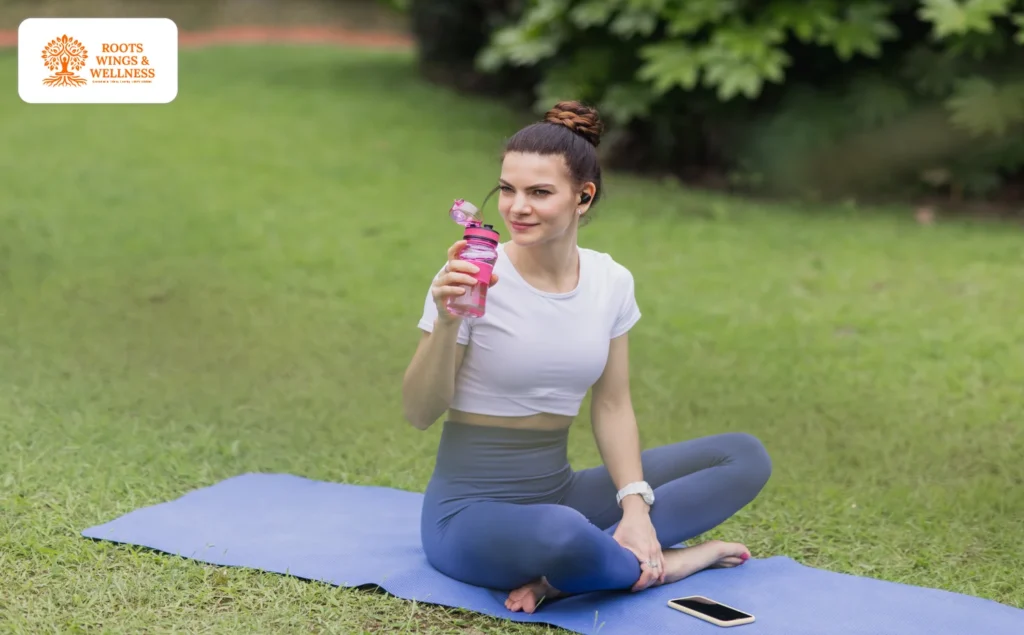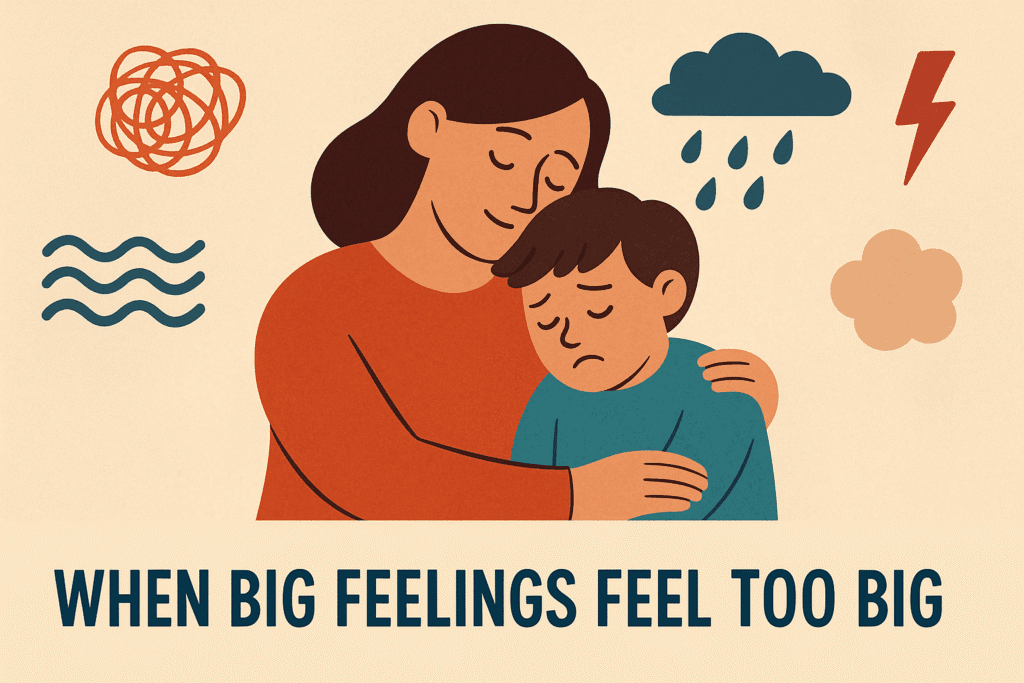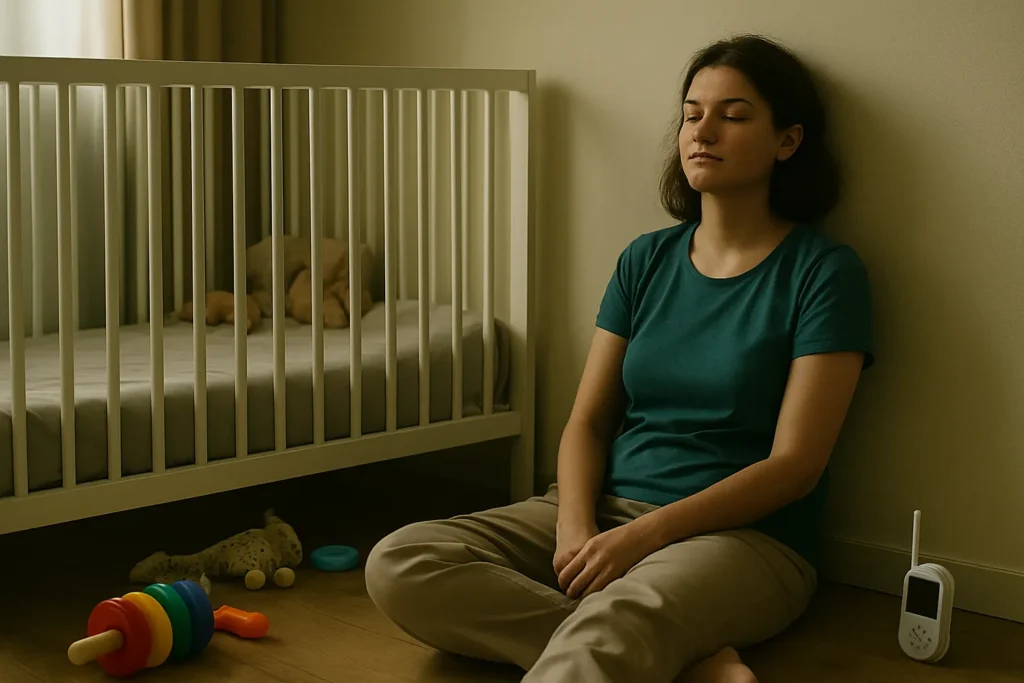We all feel it—that familiar tightness in the chest, the racing mind, the sense that everything is just too much. Whether it’s a looming deadline, a tough conversation, or even a quiet moment where the silence feels loud, anxiety has a way of creeping in.
But what if the answer to that rising tension wasn’t in a pill, a podcast, or a far-off retreat?
What if it was something you already do—every single day?
That’s the power of breathing techniques for anxiety.

It might sound too simple, but don’t underestimate it. When practiced with intention, breathing can be one of the most powerful tools you have to reduce stress naturally and find instant anxiety relief. In fact, science shows that the way we breathe directly impacts our nervous system—and with the right method, we can actually calm the chaos within minutes.
In this blog, we’ll dive into:
- The science behind breathwork and anxiety
- The best breathing techniques to regain control when anxiety hits
- How to make mindful breathing a daily habit
- Natural complementary practices that enhance relaxation
Let’s begin with what makes your breath so powerful.
Table of Contents
How Breathing Techniques Help with Anxiety

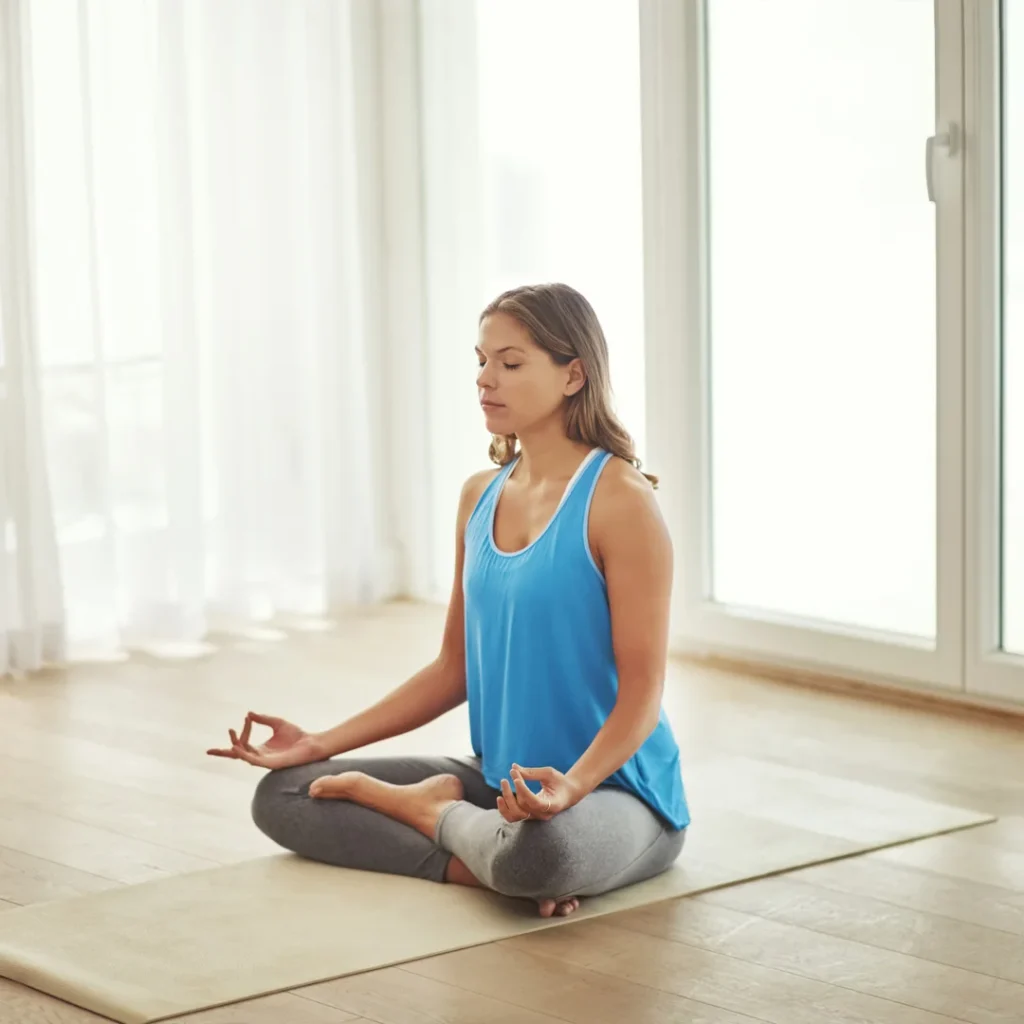
Imagine your body as a car. When you’re anxious, it’s like the engine is revving too fast—even if you’re standing still. Your heart races, your breath shortens, and your body braces for danger.
That’s the fight-or-flight response, triggered by shallow, rapid breathing.
But here’s the game-changer: you can shift gears with your breath.
Why it Works:
- Activates the parasympathetic nervous system (your body’s “rest and digest” mode)
- Lowers cortisol (the stress hormone)
- Slows heart rate and reduces muscle tension
- Improves focus and mental clarity
A 2017 study in Frontiers in Psychology showed that controlled breathing reduces anxiety by increasing oxygen exchange and calming the nervous system—no side effects, no fancy tools required.
Breathing techniques for anxiety don’t just mask symptoms—they retrain your body and mind to respond to stress more calmly.
Think of it as hitting the reset button—anytime, anywhere.
Best Breathing Techniques for Instant Anxiety Relief
When stress flares up, having a few go-to breathing exercises can feel like pulling out a fire extinguisher. These practices are simple, effective, and backed by science.
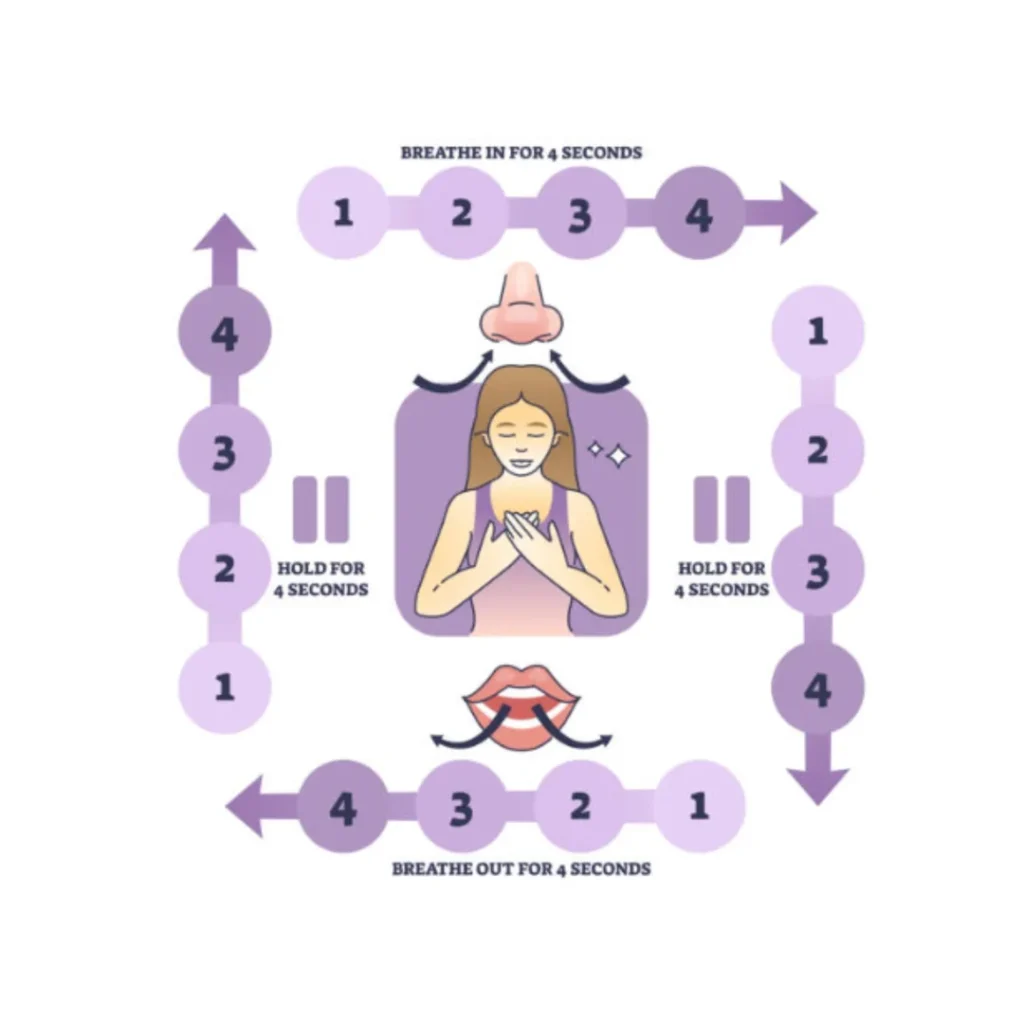
1. Box Breathing (4-4-4-4 Method)
A favorite among Navy SEALs for staying calm under pressure.
How to do it:
- Inhale through your nose for 4 seconds
- Hold your breath for 4 seconds
- Exhale slowly through your mouth for 4 seconds
- Hold again for 4 seconds
Repeat the cycle 4–6 times.
✅ This rhythmic breath pattern stabilizes oxygen intake, balances your nervous system, and provides instant anxiety relief.
2. 4-7-8 Breathing for Deep Relaxation
Nicknamed the “natural tranquilizer” for a reason. Developed by Dr. Andrew Weil, this is perfect before bed or anytime you’re feeling overwhelmed.
How to do it:
- Inhale for 4 seconds
- Hold for 7 seconds
- Exhale for 8 seconds
The extended exhale slows your heartbeat and eases you into a calmer state.
3. Alternate Nostril Breathing (Nadi Shodhana)
This yogic technique is like a brain massage—balancing the left and right hemispheres.
How to do it:
- Close your right nostril and inhale through the left
- Switch: Close left nostril and exhale through the right
- Inhale through the right, then exhale through the left
Repeat for 1–2 minutes.
✅ Great before meditation or sleep, this technique promotes mindful breathing for relaxation.
How to Incorporate Breathing Techniques into Daily Life
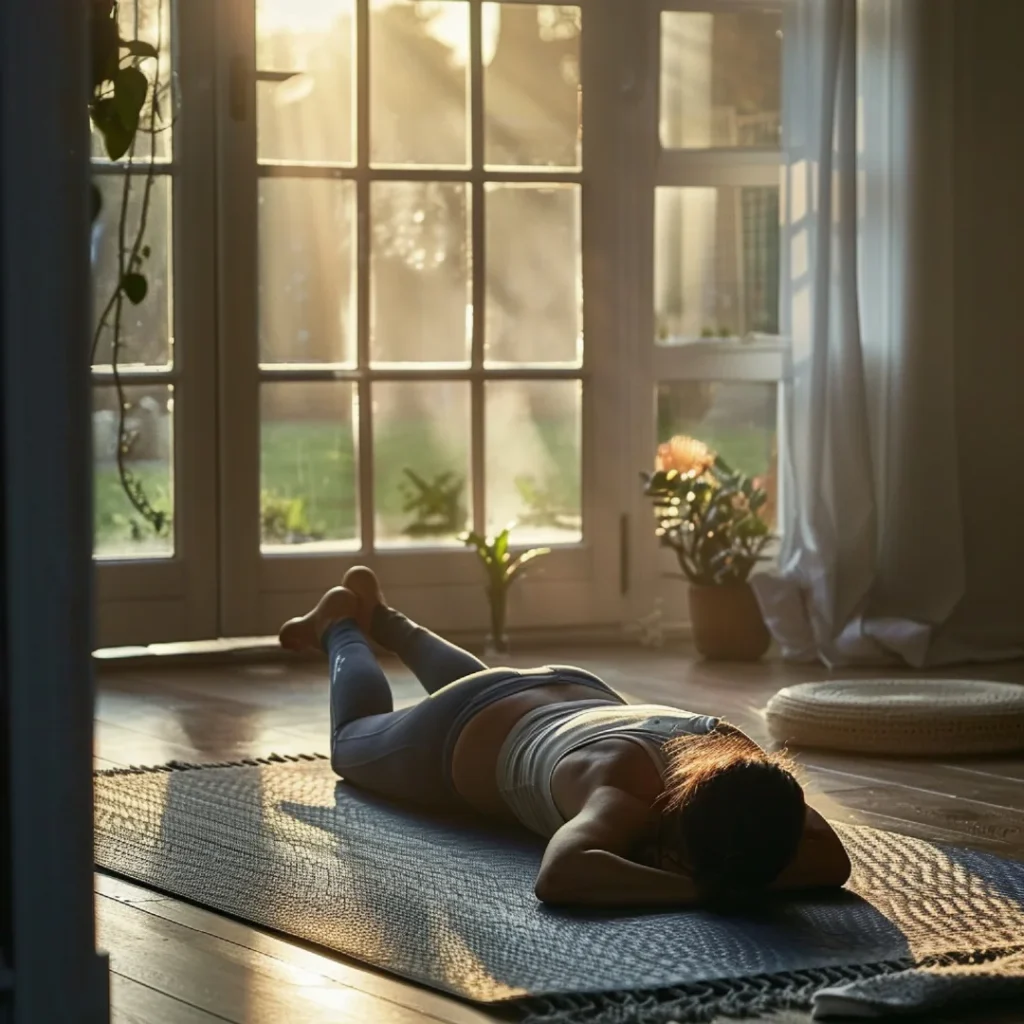
Even the best tools won’t work if they sit in the toolbox. The secret? Consistency over complexity.
Here’s how to make breathing part of your daily rhythm:
- 🌞 Morning Ritual: Start your day with 2 minutes of box breathing—it sets a calm, focused tone.
- 💼 Before a Stressful Task: Practice 4-7-8 breathing before meetings, calls, or deadlines.
- 🧘♀️ Mindfulness Moments: Combine breathing with meditation, gentle yoga, or even walking.
- 🌙 Evening Wind-Down: Use alternate nostril breathing to transition into rest mode.
Breathing doesn’t require a mat, music, or an app. All it asks is your attention.
Common Mistakes (and How to Avoid Them)
Breathing techniques for anxiety are simple—but a few common missteps can dull their impact.
Watch Out For:
❌ Shallow Chest Breathing
✔️ Breathe from your diaphragm. Your belly should expand with each inhale.
❌ Inconsistency
✔️ Don’t just breathe when you’re panicked. Daily practice strengthens your baseline calm.
❌ Over-Holding Breath
✔️ Follow structured timing (like 4-7-8). If it feels dizzying, pause or shorten the count.
✅ You don’t have to perfect the breath. You just have to return to it. Techniques and experience a deeper sense of calm.

Additional Natural Methods to Reduce Anxiety
Want to take it a step further? Pair your breathwork with other natural stress relief techniques for a holistic effect.
Try Adding:
- 🧘 Mindfulness or Meditation: Start with guided sessions that focus on breath and body awareness.
- 🌱 Grounding Practices: Walk barefoot, touch nature, use grounding scents like lavender or sandalwood.
- 🍵 Herbal Support: Chamomile tea, ashwagandha, and magnesium-rich foods can ease stress.
- 🖊️ Gratitude Journaling: Ending your day with 3 things you’re thankful for helps shift anxious thinking.
Each of these complements mindful breathing for relaxation, creating a layered approach to mental wellness.
Conclusion: Breathe Your Way to Wellness

At Roots Wings and Wellness, we believe the most powerful healing tools are often the simplest—and breath is proof of that.
Whether you’re in a boardroom, on a bus, or lying awake at 2 a.m., breathing techniques for anxiety can bring you back to your center.
You don’t need to be a meditation expert or a yogi. You just need to pause… and breathe.
Start with one technique. Stick with it for a week. Notice how you feel.
Then share it—with a friend, a loved one, or someone silently struggling.
Because peace is contagious—and it starts with one breath at a time.
🧘♀️ Ready to go deeper? Explore our guide on
👉 Mindfulness for Stress Relief
to build an even stronger emotional foundation.
Check out our insightful articles on personal growth and wellness at Roots, Wings & Wellness.
FAQ’S
It might sound too simple to be true, but yes—breathing techniques for anxiety are backed by science. When you’re anxious, your body goes into “fight or flight” mode. Deep, intentional breathing helps flip that switch and guides your nervous system back into a calmer state. It’s not magic, but it is a natural, powerful tool that your body already knows how to use.
We get it—life moves fast. The good news is, yes, some of the best breathing techniques—like box breathing or the 4-7-8 method—can bring instant anxiety relief in just a few minutes. Even one deep, intentional breath can shift your focus and ease physical tension. Try it next time you feel that chest-tightening moment coming on.
If you’re just getting started, box breathing is a great go-to. It’s easy to remember (4 in, 4 hold, 4 out, 4 hold), and you can do it anywhere—at your desk, in your car, or while waiting in line. It’s simple, structured, and highly effective for beginners who want to reduce stress naturally.
Great question. While these techniques work wonders during stressful moments, their real magic comes with daily practice. Think of it like building a muscle. When you use mindful breathing for relaxation consistently, your body learns to calm itself faster—even before anxiety fully kicks in. Just 3–5 minutes a day can make a huge difference.
We’re always breathing—but we’re not always aware of it. Mindful breathing is about being fully present with each inhale and exhale. It’s intentional, slow, and calming. It invites you to notice the breath moving through your body, which can shift your focus away from racing thoughts and help you ground yourself in the moment.
Absolutely—but gently. For those with panic or chronic anxiety, breathwork can be a powerful tool—but it’s important to start slowly and avoid over-holding your breath. Start with easy, calming techniques like 4-7-8 breathing and always listen to your body. If anything feels too intense, shorten the timing or return to natural, slow breathing. And always feel empowered to pair breathwork with professional support if needed.
It’s hard to “fail” at breathing—but some common mistakes can limit the benefits. For example, shallow chest breathing doesn’t engage your full lung capacity and can actually increase stress. Focus on belly breathing—your stomach should rise as you inhale. And remember: You don’t have to be perfect. Just present.
Yes! Breathwork pairs beautifully with other natural stress relief practices. Try:
- Light yoga or stretching
- Grounding exercises (like walking barefoot)
- Herbal teas (chamomile or ashwagandha)
- Gratitude journaling
- Listening to calming music or nature sounds
When combined, these methods help create a holistic routine that supports both your mind and body.

